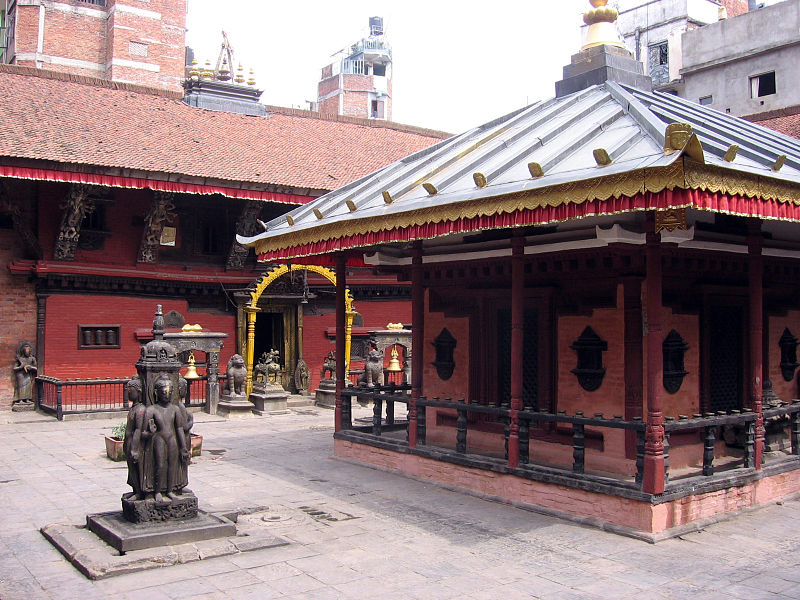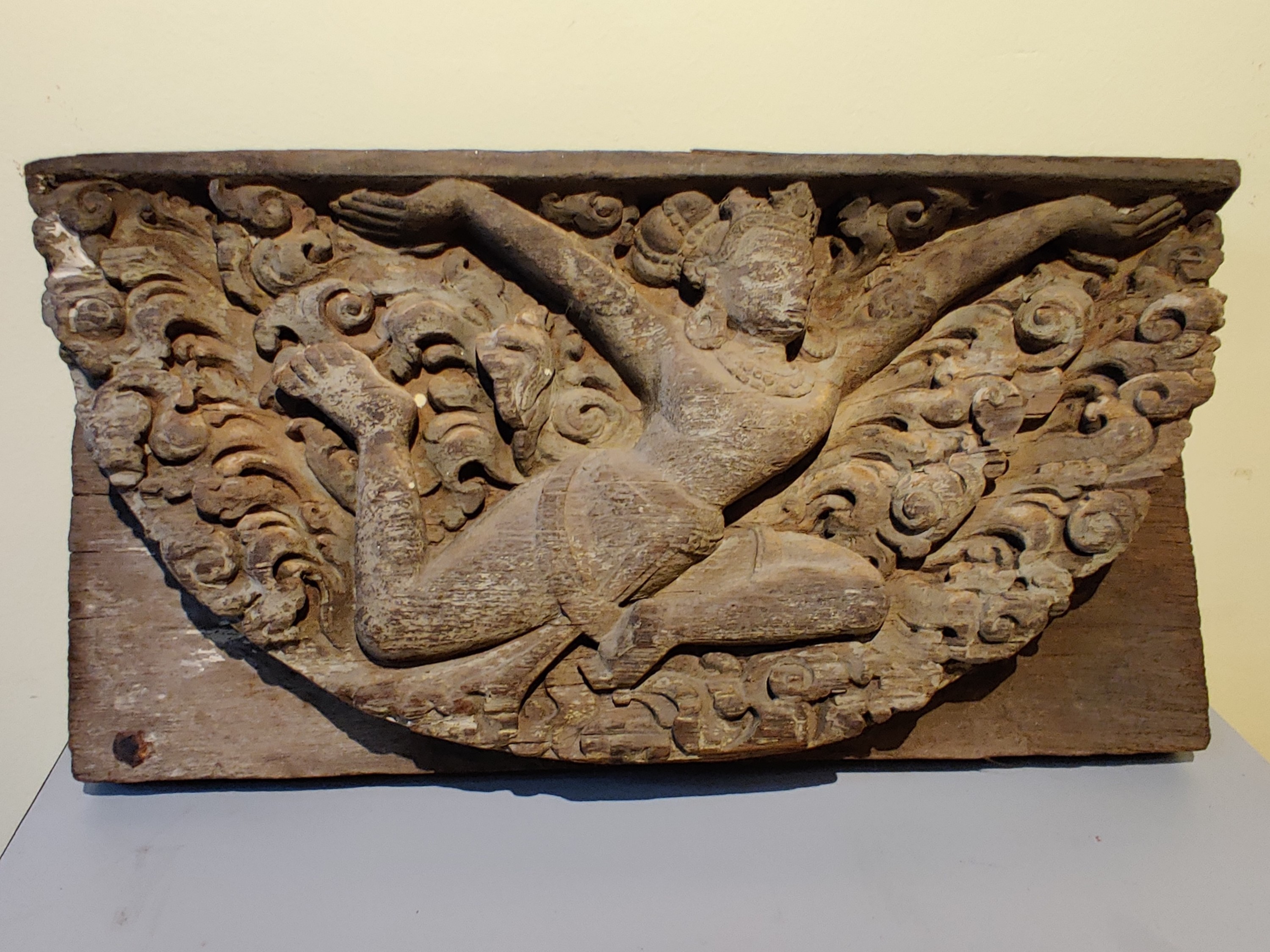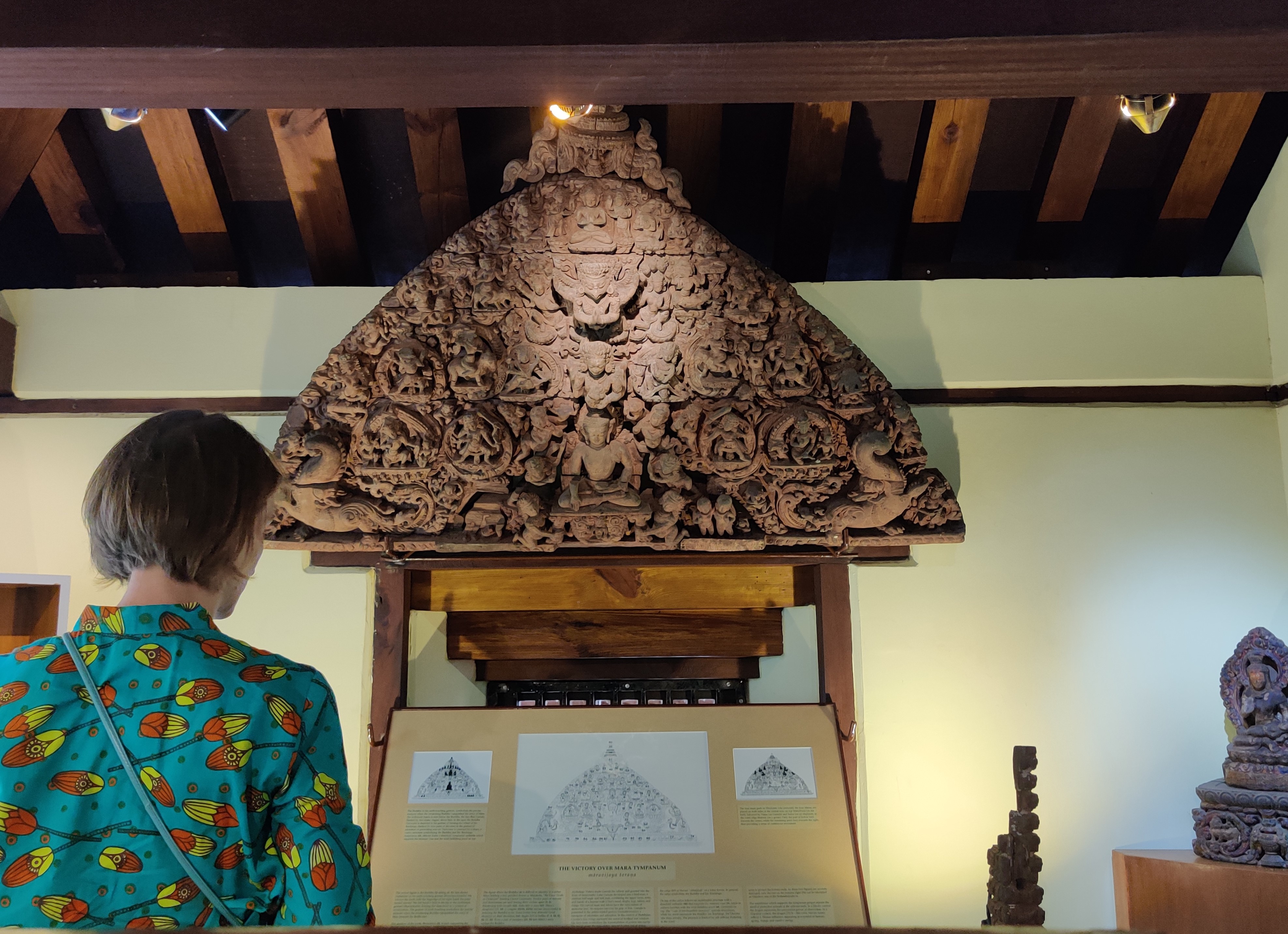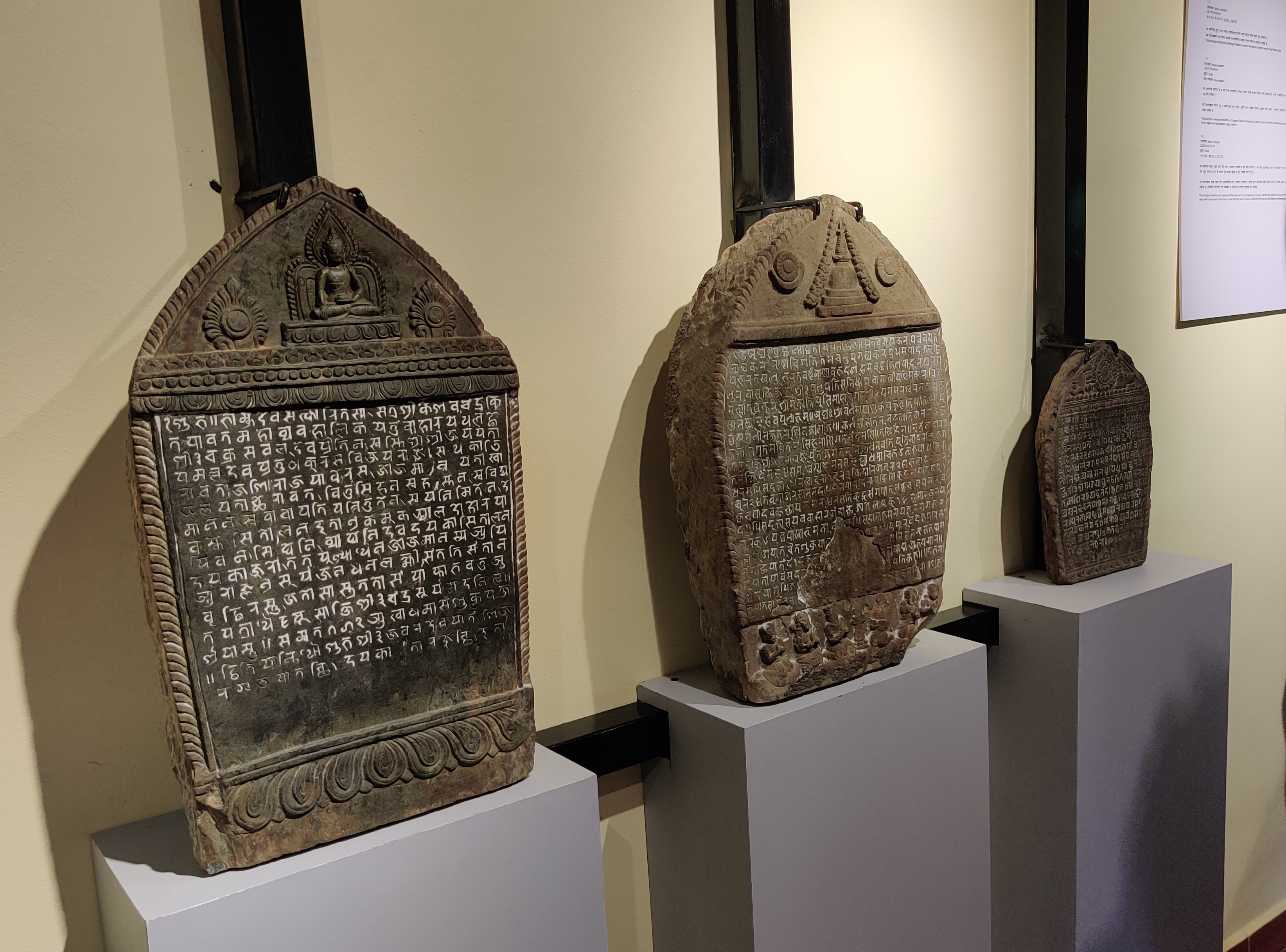
One fine morning, some two years ago, Pragya Ratna Shakya received an email in his inbox that he was eagerly waiting for. Reading that, Shakya grew hopeful that the dream the locals had for almost two decades now will finally become a reality. The email was from Rubin Museum in the USA.
Following that email, Shakya had numerous back and forth with the Rubin Museum, and the locals of Itumbahal finally inaugurated Itumbaha Museum on July 29.
“In the early 1990s, the community had envisioned that there would be a museum in the locality. I was working at that time, but I had seen the elders of the community form a group to preserve the ancient and cultural artefacts for the museum. Now, we have made it public so that people can see and learn about our rich heritage,” says Shakya.
While locals like Shakya are happy that their dream has finally become a reality, there are others who question if setting up a museum in a monastic complex is the right way to go. Allegations are being thrown stating Rubin Museum, which has a large collection of stolen art, is trying to clear its public image by lending its support to the Itumbaha Museum.
This has brought forward an important question. Is this new initiative a new way to promote cultural heritage in Nepal or does it serve as a warning, cautioning us about the potential chaos that might lie ahead?
Setting up the Museum

In the early 1990s, the locals set up Shree Bhaskardev Sanskarita Keshchandra Krit Paravat Mahavihar Conservation Society. It was this group that first envisioned setting up the Itumbaha Museum.
“They had discovered over 500 archaeological pieces most of which were in dire conditions in the bahal’s storage. One by one, all the items were taken out and cleaned to set up the museum.”
Shakya was in his 40s at that time and busy working full-time. As he grew older, he too wanted to be part of the team which was working hard to set up the Itumbaha museum. However, he soon learnt how difficult it was as they could not generate the funds needed to set up the project.
“We revived the idea to set up the Itumbaha museum again during the Covid pandemic and started talking to different people. It has not been an easy journey but our dreams have finally come true,” says Shakya.
Parts of the complex were in a dire state and before they could envision a museum, they needed to restore it. The 2015 earthquake did not help either but soon after years of trying, the various embassies came to help them restore the complex.
Shakya says the locals even approached the Kathmandu metropolitan city and its mayor Bidya Sundar Shakya who agreed to allocate funds for the project. However, as the budget heading did not match the purpose, the city government could not release the funds.
While that was going on, apsara (also locally called vidyadhar), from Itumbaha had found a new home within the collection of the Rubin Museum in 2003. After years of online discourse, thanks to a Facebook page called Lost Arts of Nepal, the apsara along with Śālabhañjikā Yakṣiṇ*, which was under the possession of the Metropolitan Museum of Art, were on their way back to Nepal through the Rubin Museum.
“This act of repatriation was possible because of a sense of social responsibility,” says Shakya.

It was around this time Shakya and the team met museologist Swosti Rajbhandari Kayastha. Kayastha, who has a good relationship with Rubin Museum, then connected the locals with the museum which had repatriated their artefacts to the Department of Archeology.
The locals who were in desperate need of funds for the project then approached Rubin for help after talking among themselves.
“I know how sensitive people in the monastic complex are. So we spoke extensively if using foreign help was the way forward. Everyone agreed and then we approached Rubin,” says Kayastha.
When approached Rubin asked the locals if they needed technical support or financial aid.
“We had neither and asked if they could help us both ways after which they decided to help us with USD 20,000,” says Shakya.
Questioning foreign investment

But that is where the activists first started questioning the intentions of Rubin.
“Our main concern is with the way Rubin Museum has attempted to whitewash the whole initiative,” says heritage activist and public litigation officer Sanjay Adhikari. “It is also suspicious the locals have chosen to take financial help from a museum that is under the scrutiny of the US government’s investigation. There are many palpable questions on ethical grounds, jeopardising the sanctity of the heritage.”
Activists are also stating that the decision to take in the money was not thought through.
“Rather than preserving living heritage, they succumbed to the allure of foreign and easy investment. They needed the money, and they were getting it, so they took it. Whereas, if they had held a local funding campaign and efforts, we think they would have gotten the needed investment,” he adds.
But locals and Kayastha do not agree with the questions raised by activists.
Shakya assures that Rubin will not be involved in their operation moving forward. He says they have just supported the locals to achieve their 20-year-long dream and the criticism of Rubin’s involvement was unfair.
“Rubin has been supportive throughout the process. All they have done is helped us set up the museum and repatriated what was in their collection,” says Kayastha.
She says tha aim of Itumbaha Museum is to educate people. She says there are various stories and social sentiments attached to these artefacts they have displayed at the museum.
“So, we crafted a plan to tell a story around the items we had to best portray the history and cultural significance of the locals and the locality.”
Kayastha, who spearheaded the project together with her students, informs that there is a dedicated section of the museum that aims to educate the public about the collective responsibility of preserving tangible heritage.
“Our knowledge is still incomplete regarding many items, so we have envisioned the space as a knowledge centre too, where new ideas and information is welcomed.”
However, activists are still gravely concerned about Rubin and accuse them of silencing individuals with the help of money so they do not question other artefacts that are in their collection.
“They sent back two artefacts. Good on them. But when will they return various artefacts that are in their collection? What we are seeking is accountability from Rubin in this aspect,” says Adhikari.
The Rubin Museum, however, refute this claim and say it has, over the years, increased its efforts to proactively and systematically investigate its collection and has returned another object to Nepal since the return of 2022.
Concerns beyond Rubin

Itumbaha is at the core, nestled in the depths of the city and steeped in timeless stories and heritage. It has rich archaeological and cultural importance, with many tangible and intangible assets. The Itumbaha Museum will serve as a site to showcase history, culture, rituals and artefacts.
But beyond Rubin, the concerns start with the name itself. The locals have taken a sense of pride calling Itumbaha Museum the first baha museum in Nepal. Activists, however, are concerned the first implies there would be others in the line.
“If you allow one, you have to allow others too. There will be more now who will take foreign aid and build museums. This is a foreign concept and the locals have fully embraced it,” says Adhikari.
The activists also do not like the world museum being tied to it and call it another way the West is trying to force its teachings into Nepal.
“Our culture has an open museum concept, with bahi dya bwoyegu culture during the gunlaa, where throughout the month anyone can visit these ba bahis,” Adhikari says.
Kayastha, however, points out that the Kathmandu valley has long functioned as an open museum, with the idea of a national museum first being introduced in 1928. Hence, dismissing it solely as a foreign concept might not be fair.
The locals are also unhappy with how the activists blew up the protest without holding a discourse with them.
“That is false. We asked them to set down for talks,” says Adhikari. “But they told us we should not interfere in the matters of their guthi.”
As initially scheduled, the Itumbaha Museum was open for a week. However, according to Shakya, the Society had not established a clear plan for its future operations. The decision on whether to implement an entry fee or establish separate management to look after Itumbaha Museum remains uncertain.
Activists point out that this shows the locals rushed in to open the museum. They feel the locals do not have a proper plan and have inaugurated the museum to justify the funds they received from Rubin.
“The absence of Rubin Museum representatives and the US Embassy at the opening speaks volumes,” says Adhikari.
Meanwhile, they add, the rushed inauguration has now opened doors to more chaos that will only snowball more.
“The very living culture that once thrived and got passed down through generations is now threatened by the encroachment and boxed representation of the dead culture that these foreign museums seemed to advocate,” says Adhikari.
However, the locals do not care. They are happy that a two-decade-long project has finally become a success. For now, there is no sustainable model in place and activists say this is a major concern and question if this project can be deemed successful or not.
“Nepali museums’ involvement with foreign investment is not a sign of progress, but rather a warning about the potential loss of intangible heritage. It feels like they just wanted the money and did not know what to do later,” says Adhikari emphasising the importance of prioritising the preservation of living heritage over the temptation of commercialisation and profits.
*Correction: Śālabhañjikā Yakṣiṇī was repatriated to Nepal from the Metropolitan Museum of Art and not from the Rubin Museum of Art. The error is regretted.



















